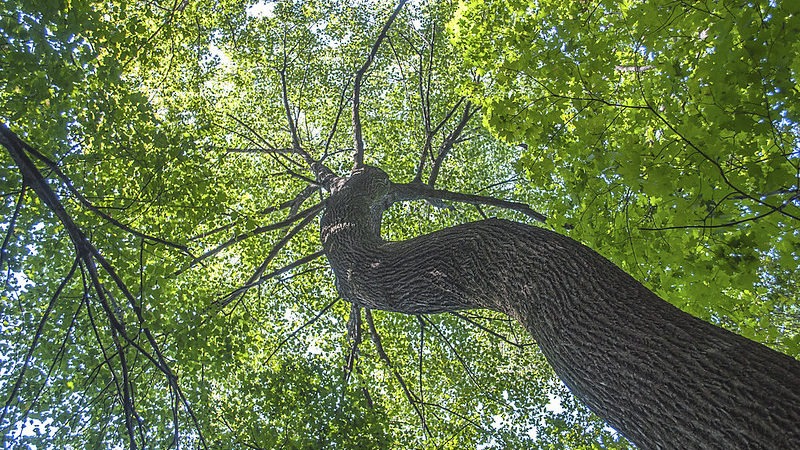Michael Charles Tobias and Jane Gray Morrison have, once again, broken through into a new realm of environmental research with their latest mind-bending work, The Quantum Biosemiosphere. This complex undertaking offers readers an opportunity to explore some of the most intricate ideas ever composed in the ecological literary pantheon. The authors challenge readers to stretch the “evolutionary boundaries” of our ecological understanding and connect to an existing but previously unseen means of communing with nature, in a scientific/literary effort to help motivate those ideas and ideals that humanity might still wield to save the Earth from ourselves.
To perceive the vastly omnipresent, quantum world of underlying social messaging from the inhabitants of the Earth, the Biosemiosphere – an elaborate, if incalculable interdependency of profound meaning being shared by species, mountains, cells, and waves of light – is akin to entering a vastly, intensely alive version of Walden’s Pond. To achieve real and lasting conservation goals, we need to know what the creatures from within and without the proverbial pond are feeling and thinking. This “language” exists in a domain of being that can and must be developed into insights that will inform a path to transformative stewardship and awareness.
In this precarious time, in an ever-more consequential epoch of the Anthropocene and with the most recent IPCC report foretelling the gravest outcomes, the unfathomable implications for the world of reckless wars, humanity’s continued expansion and debilitation of life on earth, it’s clear we are in for some “good times,” as my daughter might darkly chortle. Such castaway honesty underlies a rife depression in those of us who deal with the stark and grim view that we are indeed globally and ontologically ruined, if we don’t come up with some sort of paradigmatic shift. Not just in our thinking, but in our inherent power to delineate and eradicate our self-destructive ways. As ice shelves are rapidly melting, the time for dramatic turnarounds is now. We therefore need the greatest minds and most incisive philosophers to shine the light at the end of this dark tunnel that we, and sadly, our flailing youth, have yet to see.
Michael Tobias and Jane Morrison are two brilliant beacons who, like David Attenborough, have earned their credibility and reputation by investing their entire lives in the search for a path, a trail in the forest of our blindness, to find a way through. Their travels, research, heroic work, and prolific innovative messaging have culminated in this latest demonstration of unflinching attention at the edge of the precipice. The breadth and depth of their inquiry into the question of our disassociated relationship with nature are equal to their analysis of the remarkable capacity of our species to imagine the impossible.
The Quantum Biosemiosphere points us to the possibility that our hubris as a species may yet be eschewed and replaced with a far richer, innate, and earthbound way of relating to the world, thereby fulfilling the promise of who we are, and engendering our responsibility towards preserving and sustaining the tenuous biodiversity on this planet.
However, the path forward depends solely on our capacity to expand and innovate beyond the scientific or empirical categorizing of every cell of sentience we encounter. Our psycholinguistic entrapment bears all the hallmarks of an anthropic psychosis. In other words, our intractable self-aggrandizement that translates into an obsessive penchant for naming, identifying, and thereby controlling the very semiotics of our relationships to life on Earth. This tragic narrowing, by all that we think we have achieved, has done nothing but limit the channels of communication available to us. This, in turn, deprives us of the information we need to appreciate the critical messaging being conveyed to us, which we aren’t hearing. This unique traffic peril is afflicting H. sapiens and thus the vast majority of other species, biomes, and myriad interconnections.
Gregory Bateson, the philosopher/ecologist who pioneered the idea of integrating information systems and ecological awareness, coined the term “patterns which connect”. Bateson could only hint at the remarkable elucidation of such a clear, truly empathic environmental paradigm as Tobias and Morrison have conveyed in their new work. The authors have created a tremendous wealth of artistic, literary, scientific, and ecological research, powerfully catalyzing an immersive path to attune ourselves to our inherent but distracted ecopsychological immanence. The complexities cannot be readily elaborated on in a review. One must experience the book. But what is abundantly clear is that quantum ethological communication can serve as a basis for our survival and our capacity to understand, decipher, and intuit the earth’s infinite signals, Dolittle-like. Not just indescribable beauty but the vulnerability of the others. The goal, unambiguous, but treated with an acute and empirical style, is firmly oriented at averting and healing our propensities for brute obliviousness and outright hostility to nature.
Mind you, this book is not for the squeamish. The author’s mastery of the English language is humbling; often challenging the limits of one’s trained erudition. The complexity of their observations, the minutiae of detail, and the referential expanse seem, inherently, reflective of the point they are trying to make. The Biosemiosphere, in which we are immersed, unconsciously avails us all manner of biological/ethical benefits. By attuning ourselves, even in the quantum realms, we might help to guide and infuse an ecological paradigm as yet hardly conceived, let alone enabled by global humanity. As we’ve saddled the Earth with our clumsy, uncaring presence, the opportunity for being-ness, beyond being human, remains our calling.
The clear expression of our deep association of such an “I-Thou” relationship (as the philosopher Martin Buber so beautifully enunciated), is compassion.
The authors write:
“The Biosemiosphere is that same functioning, spatial reality intrinsic to every organism whom it accepts into its ongoing miracle that is life. The relativity between the waves and particles that comprise its quantum states are, again, not a matter of ephemerality and bewildering measurement as much as our willingness, in spite of infinities, within and all around us, to settle for some, any one personage at a time, serious compassion that is unbounded.”
Ecological consciousness has always been about finding ways to become one with nature – enlisting our minds and hearts within that bounteous infinity of life on Earth and beyond. Tobias and Morrison assert that this is an available pathway for all should we fathom the engenderment of our natural selection for kindness and curiosity.
Tobias and Morrison’s rewarding book offers a scintillating focus and presents a serious if shattering treatise. A transformative, ecological paradigm based on a new theoretical metaphysics which surrounds us is speaking to us, lives within us, and seeks to guide us towards a transcendent future where we take care of our precious Earth.
About Michael Charles Tobias
President and CEO of the Dancing Star Foundation. Global ecologist, anthropologist, historian, explorer, author, and filmmaker. Tobias obtained his Ph.D. at the Department of History of Consciousness from the University of California-Santa Cruz. He was Assistant Professor of Environmental Studies & Adjunct Assistant Professor of English and the Humanities at Dartmouth College. Tobias is the author of more than 55 books (both fiction and nonfiction). He has written, directed, produced, or co-executive produced over 100 films – TV series, documentaries, and dramas, most about environmental, cultural, social, or scientific issues.
About Jane Gray Morrison
Executive Vice President of the Dancing Star Foundation, Morrison is an author, filmmaker, and ecologist whose work has taken her to dozens of countries. Morrison has produced numerous films for the networks Discovery, PBS, and Turner Broadcasting (as Senior Producer for Voice of the Planet, a 10-hour dramatic series based upon the history of life on Earth). Her other films include a feature documentary trilogy, Mad Cowboy, No Vacancy, and Hotspots, and projects like the short film Yasuní – A Meditation on Life for the Rio+20 Summit. Her books include Sanctuary: Global Oases of Innocence, The Metaphysics of Protection, Bhutan: Conservation and Environmental Protection in the Himalayas, God’s Country: The New Zealand Factor, and The Hypothetical Species: Variables of Human Evolution.
 Michael S. Bostick is an environmental professional, artist, and freelance writer.
Michael S. Bostick is an environmental professional, artist, and freelance writer.
The MAHB Blog is a venture of the Millennium Alliance for Humanity and the Biosphere. Questions should be directed to joan@mahbonline.org
The views and opinions expressed through the MAHB Website are those of the contributing authors and do not necessarily reflect an official position of the MAHB. The MAHB aims to share a range of perspectives and welcomes the discussions that they prompt.
